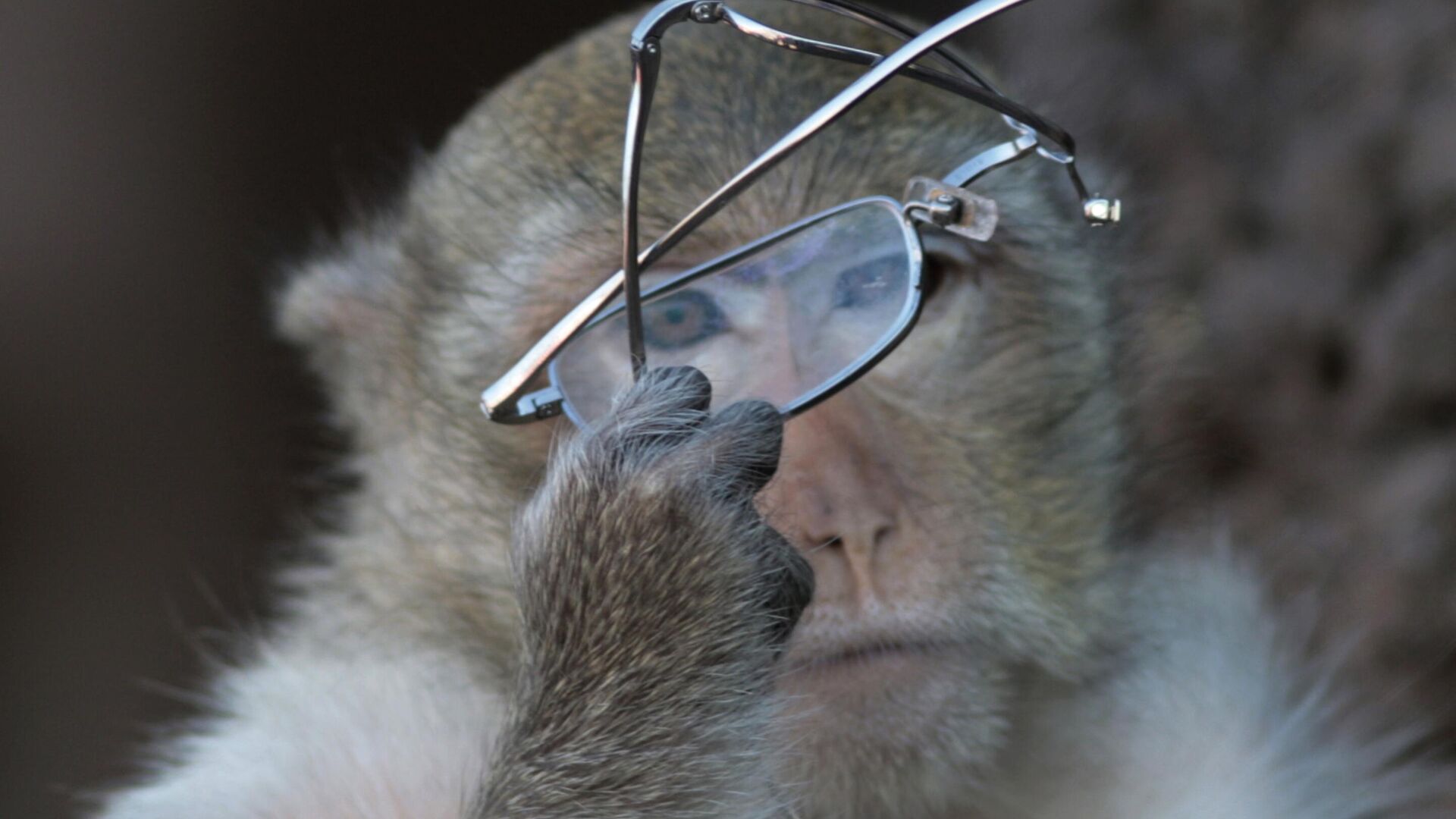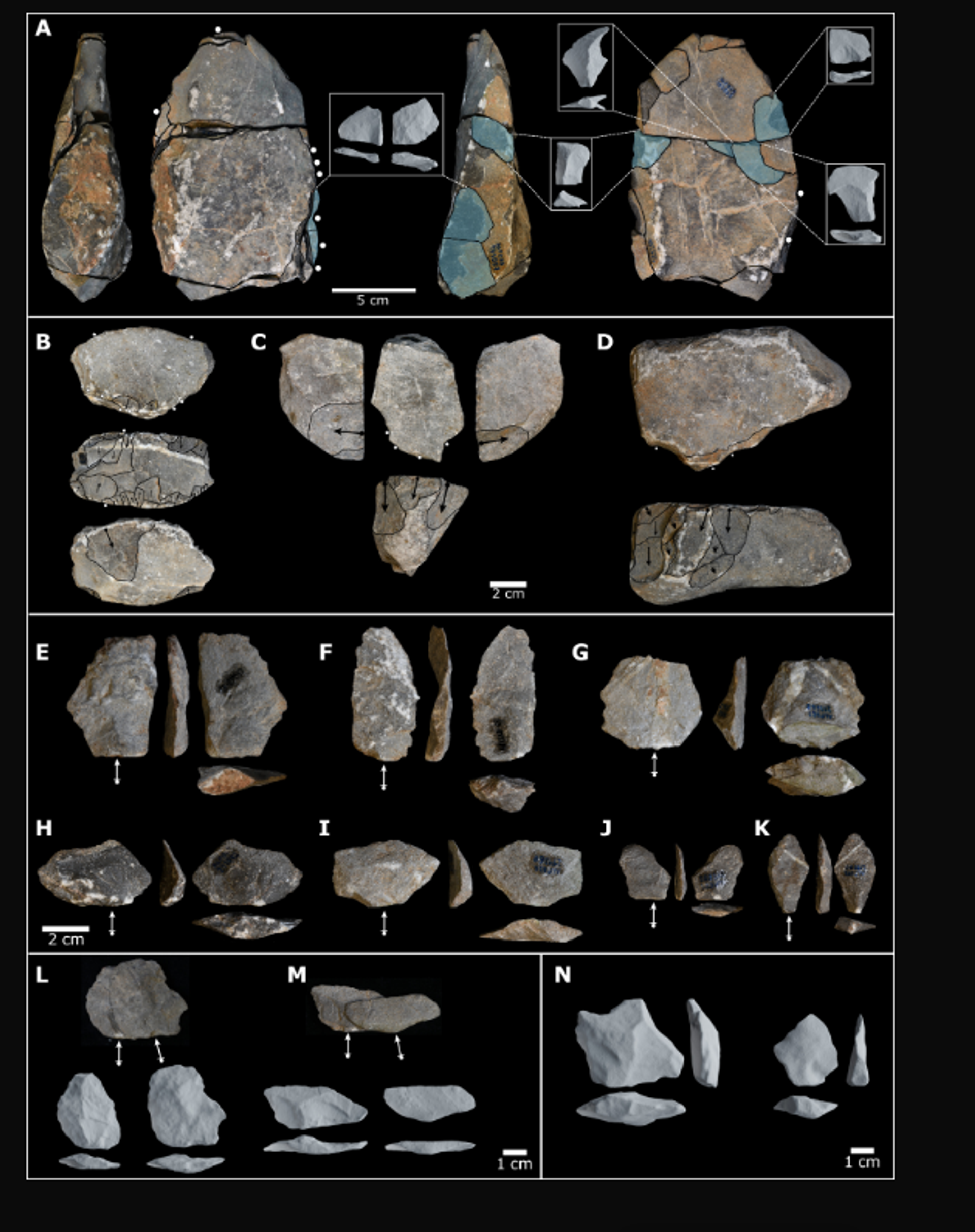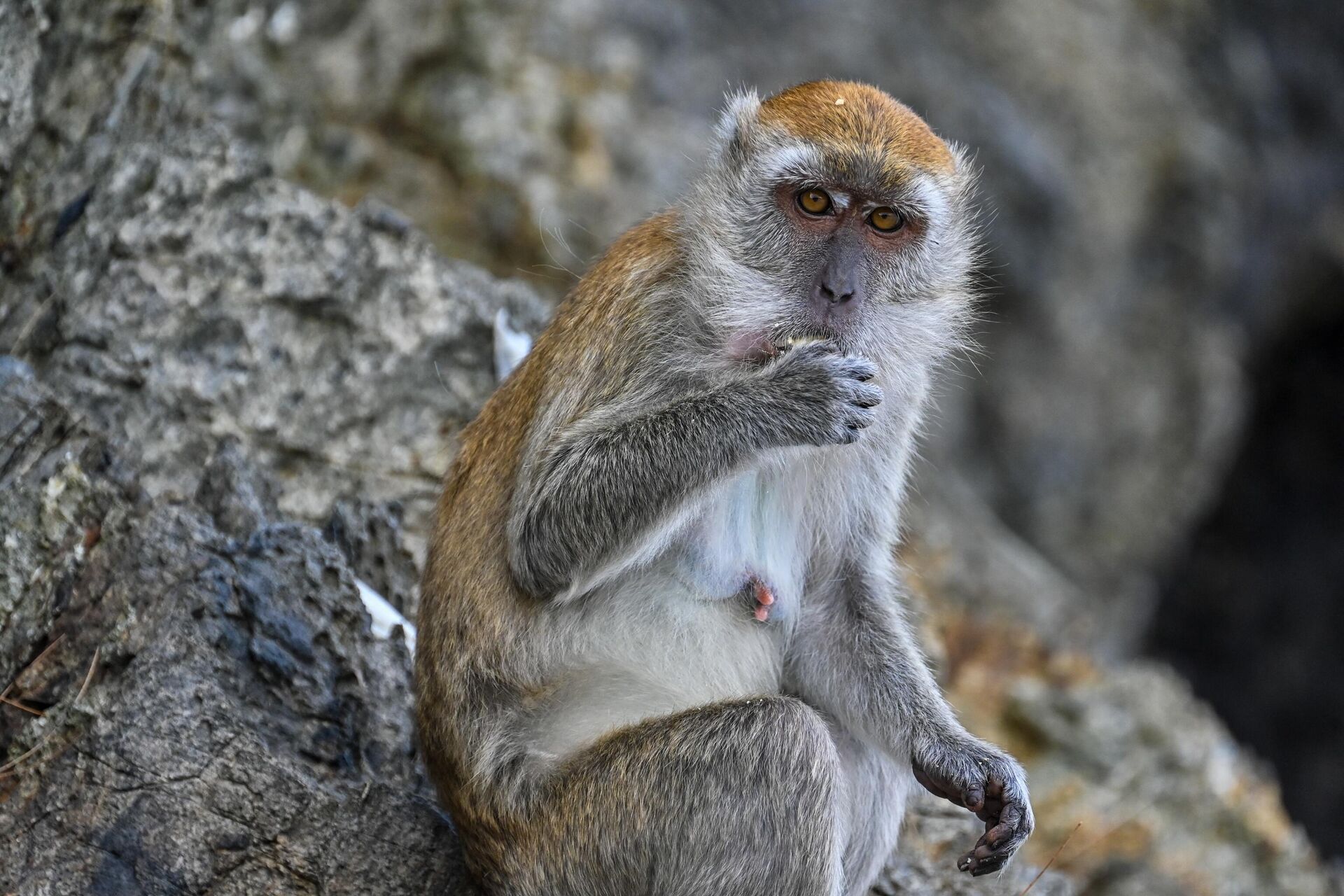https://sputnikglobe.com/20230311/wild-thai-macaques-could-throw-monkey-wrench-in-human-evolution-narrative-study-says-1108291630.html
Wild Thai Macaques Could Throw Monkey Wrench in Human Evolution Narrative, Study Says
Wild Thai Macaques Could Throw Monkey Wrench in Human Evolution Narrative, Study Says
Sputnik International
The evolution of human tool use among ancient man could have been less deliberate and more unintentional, a study by scientists of the Max Planck Institute has suggested.
2023-03-11T15:16+0000
2023-03-11T15:16+0000
2023-03-11T15:16+0000
science & tech
monkey
macaque
evolution
tools
max planck institute
https://cdn1.img.sputnikglobe.com/img/07e7/03/0b/1108290429_0:212:2885:1835_1920x0_80_0_0_dee43f775bff52ca1a2dbd68075eba41.jpg
The evolution of human tool use among ancient man could have been less deliberate and more unintentional, a remarkable and controversial new study by scientists at the Max Planck Institute has suggested. Wild monkeys observed in the forests of Thailand were able to create stone artifacts “indistinguishable from what we see at the beginning of the [human] archeological record — what we see as the onset of being human,” said Lydia Luncz of the Max Planck Institute for Evolutionary Anthropology, a co-author on the study.But the crux of the matter is that the long-tailed macaques appear to have crafted their stone tools by accident, the Planck team’s findings reveal in a study published in Science Advances.Primates like the long-tailed macaques encountered in Southeast Asia typically resort to stones to break oyster shells on the seashore to reach the tender meat inside. The researchers emphasized that the beachcombing monkeys would pick narrow and heavy stones (dubbed an "axe hammer" by anthropologists) to do so. What amazed the team was first-seen evidence that these monkeys were adapting the use of stone tools from just cracking shells to a different source of food - nuts.Using set-up camera traps, the researchers witnessed the animals foraging for nuts of African oil palms at an abandoned oil palm plantation in a Thai national park. There, the monkeys broke open the nuts, holding in their hands specially selected "hammer" rocks. A flat stone was used as an anvil. But on some occasions the monkeys missed a strike. On such instances, the two stones accidentally banging together would result in sharp stone flakes. According to anthropologists, in ancient humans such a process was deliberate. Archeologists call this “knapping,” when rocks were cracked apart to create better tools. Oddly, when such ancient tools are compared with those "unintentionally" created by macaques, they are eerily similar.This, if true, would put a more intuitive spin on the existing narrative of human evolution.“An accidental stone breakage could have led us down the evolutionary trajectory of making stone tools,” Lydia Luncz of the Max Planck Institute for Evolutionary Anthropology concluded.
https://sputnikglobe.com/20230210/about-29-million-years-old-discovery-in-kenya-casts-doubt-on-first-toolmaker-theory-1107318181.html
Sputnik International
feedback@sputniknews.com
+74956456601
MIA „Rossiya Segodnya“
2023
News
en_EN
Sputnik International
feedback@sputniknews.com
+74956456601
MIA „Rossiya Segodnya“
Sputnik International
feedback@sputniknews.com
+74956456601
MIA „Rossiya Segodnya“
wild macaques, evolution of human tool use, human evolution narrative, monkeys create stone artifacts, indistinguishable from beginning of the human archeological record, max planck institute for evolutionary anthropology,
wild macaques, evolution of human tool use, human evolution narrative, monkeys create stone artifacts, indistinguishable from beginning of the human archeological record, max planck institute for evolutionary anthropology,
Wild Thai Macaques Could Throw Monkey Wrench in Human Evolution Narrative, Study Says
A defining aspect of our ancestors’ evolution was the ability of early humans to manipulate stones for tool production, such as making sharp-edged flakes by striking two stones together, to make them more useful for cutting. However, researchers from the Max Planck Institute recently made observations that have led to controversial speculation.
The
evolution of human tool use among
ancient man could have been
less deliberate and more unintentional, a remarkable and controversial new study by scientists at the Max Planck Institute has suggested.
Wild monkeys observed in the forests of Thailand were able to create stone artifacts “indistinguishable from what we see at the beginning of the [human] archeological record — what we see as the onset of being human,” said Lydia Luncz of the Max Planck Institute for Evolutionary Anthropology, a co-author on the study.
But the crux of the matter is that the long-tailed macaques appear to have crafted their stone tools by accident, the Planck team’s findings reveal in a study
published in Science Advances.
Primates like the long-tailed macaques encountered in Southeast Asia typically resort to stones to break oyster shells on the seashore to reach the tender meat inside. The researchers emphasized that the beachcombing monkeys would pick narrow and heavy stones (dubbed an "axe hammer" by anthropologists) to do so. What amazed the team was first-seen evidence that these monkeys were adapting the use of stone tools from just cracking shells to a different source of food - nuts.
Using set-up camera traps, the researchers witnessed the animals foraging for nuts of African oil palms at an abandoned oil palm plantation in a Thai national park. There, the monkeys broke open the nuts, holding in their hands specially selected "hammer" rocks. A flat stone was used as an anvil. But on some occasions the monkeys missed a strike. On such instances, the two stones accidentally banging together would result in sharp stone flakes.
According to anthropologists, in ancient humans such a process was deliberate. Archeologists call this “knapping,” when rocks were cracked apart to create better tools. Oddly, when such ancient tools are compared with those "unintentionally" created by macaques, they are eerily similar.
"All the conoidal flakes we find in the archaeological record — deemed to be intentionally made — could be unintentional byproducts,” Luncz said.
This, if true, would put a more intuitive spin on the existing narrative of human evolution.
“An accidental stone breakage could have led us down the evolutionary trajectory of making stone tools,” Lydia Luncz of the Max Planck Institute for Evolutionary Anthropology concluded.

10 February 2023, 13:45 GMT




